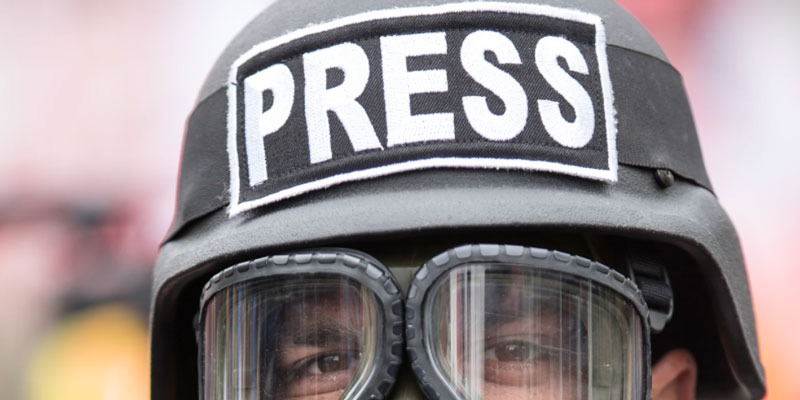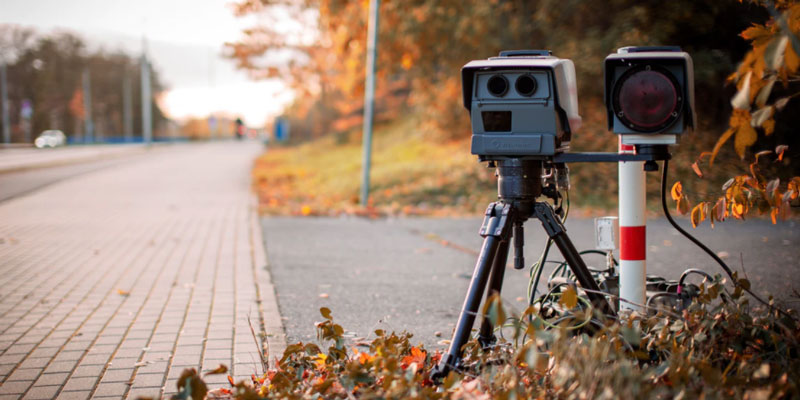Two ingredients for a crucial point producing deeper understanding are present in a RealClear Politics commentary by Phill Kline, but he doesn’t quite draw them together.
The first set of ingredients consists of seven items his organization, the Amistad Project, has found through litigation related to the 2020 election. Basically, they are the familiar points that have led some of us to conclude that the election was illegitimate (aka, stolen), even if direct fabrication of votes can never be proven.
The second major ingredient is this summary:
This situation is the fruit of decades of policy and intellectual neglect. We have nationalized every issue, and national leaders have responded by claiming to be able to fix every problem facing every American citizen. They pass a vaguely worded law and push authority over to the vast administrative state while ignoring the application of that law and avoiding accountability for the law.
This separation of political power from political accountability is now so embedded in our republic that we have generally accepted an unelected, unaccountable bureaucracy telling us when we can visit loved ones in the hospital, celebrate a marriage, gather over the holidays, or engage in political rallies.
Kline doesn’t quite make the connection between these two distinct topics, but I’d suggest that the first is actually a consequence of the second. In fact, the picture emerges best by taking them in reverse.
The goal — albeit, probably a natural and organically evolving one — was to separate power from accountability. Seeking to sell vague principles without having to take responsibility for their implementation, elected officials have pushed accountability into a faceless bureaucracy and sought to export it to a distant national capital. This has made government less and less responsive to the interests and desires of the public, to the point that it is of existential importance for competing interests to win a handful of national elections.
This, in turn, is now leading to an assault on the very last tool for accountability: the ballot box. As Biden bizarrely bellowed, the tyrants now realize they must nationalize the counting of votes so that they can ensure the proper outcome every time. They simply can’t have their entire machine of rule accessible to somebody intent on making it work differently.
This isn’t a partisan point, but a predictable sequence of stages that can be deduced from core principles, and we all must take responsibility for reversing the trend. We need to revive different core principles, such as respecting individual autonomy and prioritizing local control — even when our neighbors want to do things with which we disagree and letting government one step up get involved because that way we’ll win a local spat.
Featured image by Tom Wilson on Unsplash.
[Open full post]Sorry, but I don’t see how this, from Janine Weisman, isn’t a display of the need for greater education in economics:
Good to know: Starting tomorrow, health insurers must pay for your at-home #COVID-19 home test kits. All
@BCBSRI plans except Medicare fully cover the home test kits without a prescription, and each person on the plan is covered for up to 8 home test kits every 30 days.
Consider that it’s impossible to find the tests right now, even with people having to pay for them. Making them essentially free will only make that problem worse. The key is to reduce the government-mandated value of testing and to allow pricing mechanisms to limit their use to people who actually need them for one reason or another.
Honestly, I do not understand why this is so difficult for folks to understand.
[Open full post]Bethany Feudenthal, who writes for the Newport Daily News, has been commenting on her low rate of pay, with social media posts such as this:
I might be controversial at times, like last year I posted my W2’s on social media, and yesterday I posted my pay stub from last week. Journalists write about public official’s salaries, but we rarely talk about our own. Journalism is a tough job. We deserve fair pay.
She makes a fair point about pay. Informing people about their communities and their government ought to pay well. It ought to be an area of such broad and concentrated interest that its practitioners stand toe-to-toe with, say, teachers and college professors.
The thing with “ought to,” however, is that the phrase comes burdened with questions about why the desired condition isn’t already the case, who is responsible for the fix, and what process can bring about the solution without doing more damage in some unintended way. These aren’t easy questions to answer.
Here’s the bottom line: The market for traditional news is not what it used to be (especially because it is no longer needed as a source of entertainment), and the number of people who want to provide it — with varying degrees of opinion mixed in — is so huge that many are willing to do it for free. Furthermore, the opportunities for businesses to advertise and otherwise promote themselves are now nearly limitless, not only in terms of advertising, but also spanning to earned-media hits, viral campaigns, promotional items, and more. The reality of news organizations has simply changed. They are no longer at a naturally limited bridge between the demand for advertisers to reach an audience and the demand of the public to fill time, partially by paying attention to what’s going on in the world around them.
So, “ought to” is a problem. In the old model, news organizations’ client landscape was pretty much split between the people who subscribed (and thereby gave them an audience) and the people who advertised (seeking access to that audience), with respect and credibility bestowed by those who wanted to be covered, understanding that those who had access to an audience held the advantage. Now, the readers are no longer convinced of the value of paying for the product. The advertisers are no longer convinced of the value of the space, compared with other options. And many of the people desiring coverage (particularly in government) can access audiences directly and have realized that they have something marketable for which the reporters ought to pay with generally positive coverage.
Don’t forget, by the way, that we used to have a cultural understanding that (1) advertisers, which used to include want ads and classifieds, weren’t necessarily endorsing anything that might be published in or endorsed by the publication and (2) the news organizations weren’t implicitly endorsing the products, services, or advocacy whose ads they took money to publish.
So, who “ought to” fund the news? The question has become especially difficult as it is ever-more obvious that the providers are almost universally biased toward a particular party and a particular ideology.
Some say the government, which would only increase officials’ expectation of positive coverage while decreasing the audience’s trust. When I attempted to draw an answer from Feudenthal, the answer seemed to be non-profit donors, which means journalists would be bound by the often-ideological demands of the people writing the checks.
Maybe a new market of ideologically funded, free-to-the-reader news would serve modern purposes in a community that’s reasonably well balanced, politically. In Rhode Island, however, it would be tantamount to adding sandbags to the already-dragging side of the ship. Around here, that sort of press will be (arguably, is) merely part of the insider class.
In that case, the statement that journalists “ought to” be better paid is little more than a negotiation stance among insiders for a larger piece of the take from a paying audience that is increasingly held captive at the point of a government gun.
Featured image by Engin Akyurt on Unsplash.
[Open full post]Perhaps you’ve seen video of Joe Biden shouting about how important it is for his government to seize authority over who counts votes in America:
Biden, appearing to admit defeat on ending the filibuster & nationalizing elections, randomly starts shouting: States’ voter reform laws are “about who gets to count the votes! Count the vote! Count the vote!” pic.twitter.com/66LpGL1ckQ
— Tom Elliott (@tomselliott) January 13, 2022
This is certainly a “saying the quiet part out loud” moment, with masks coming off. According to Biden, refusing to change the way in which elections are done in the United States is “election subversion.”
Remember when suggesting that something might be strange about the way votes were being counted was, itself, considered a subversion so offensive as to render one an insurrectionist?
Yeah… there are no standards. What Democrats and progressive want or need is always right, even if it would be the highest evil for their opposition to do exactly the same thing.
[Open full post]For seven weeks, East Providence sent warnings instead of tickets to drivers who went more than 11 miles per hour over the speed limit in school zones. The system issued 69,528 such warnings, in fact, which works out to about 1,420 per day.
The cameras have only been snagging drivers for actual $50 tickets for a few days, so behavior may change, but the daily average for the first three was around 1,450. With this limited comparison, it looks like the warnings had zero effect.
If these numbers keep up, East Providence will collect around $131 million over the five-year contract with provider Sensys Gatso U.S.A., which would receive about $19.3 million. That’s on the high end, of course. People will change their behavior, and the cameras won’t ticket while schools aren’t in session. According to Sarah Guernelli’s article, Sensys expects to be paid about $4 million during those five years, which implies total ticket revenue of about $26.4 million.
Either way, that’s a lot of money for a municipality to pull out of its people, and the fact that the tickets aren’t reported to the Division of Motor Vehicles unless they’re unpaid gives the impression that the system is, in fact, more about the revenue than the enforcement of necessary speed limits.
As this technology proliferates, we should probably keep an eye on an important question: Is this new, lucrative policy a response to actual incidents? If 1,400-something people are driving at least 11 miles per hour over the speed limit every day without incident, maybe that limit is unreasonably low. Maybe not… just a thought.
On this issue as on every other issue, a wise citizenry will continually ask to be reminded of the reason for a law. There will always be more that could be done to make some people a little safer or more comfortable and to more stringently enforce the law, but when those laws are passed, the estimated ability of the government to enforce them is implicit. The implied consent of the public was to a system with a low risk of tickets for low-speed violations.
That is, it’s effectively a change in the law when the government adds technology to change a low risk to 100% risk, and officials should have to justify the new terms.
Featured image (not an East Providence camera) by Denny Muller on Unsplash.
[Open full post]What caused the relationship to deteriorate rapidly was a McKee media mouthpiece [Dan Yorke] who bragged that the Governor shared with him a plan to remove Scott if elected in the fall. Scott angrily confronted McKee who denied the conversation [Yorke] but the damage was done.
John thinks it was a “blunder” that McKee didn’t replace Alexander-Scott during the summertime after he took office. The only thing that gives me pause before agreeing is McKee’s track record when bringing in his own people. Replacing Alexander-Scott would only have provided benefit if her replacement was reasonably competent and non-corrupt, which is by no means assured.
One takeaway for Rhode Islanders, however, has to do with the office of lieutenant governor. If the only official duty of that position is to be ready to become governor on short notice, perhaps we should expect lieutenant governors to spend their time closely following the governor’s activities and developing a plan to replace him or her.
[Open full post]In order to improve them, we have to understand how our institutions work, but we’re not very good at assessing them anymore.
Maybe the problem is the mix of self-esteem culture with identity politics and progressive domination of our cultural institutions. Saturated in that social brew, our governing class has become something like a giant nonprofit organization on a permanent retreat for morale building.
If you’re on the trip, you must be good and well-intentioned. The activities are fabricated, so it doesn’t really matter whether anybody does them well. And the only people outside the Circle of Affirmation are those who refused to participate in the retreat and occasionally send messages that give the impression they think the organization is supposed to have some purpose beyond building its own morale.
I don’t intend this as insult or mockery; I’m only trying to describe what I see. This morning, the above description is suggested by two pieces in the Rhode Island section of the Boston Globe.
The first is Brian Amaral’s latest on-the-scene profile of the growing disaster that is Rhode Island’s hospital system: “How COVID-19 and staffing issues took Rhode Island Hospital ‘from bad to terrible’.” With each such article, the understanding dawns just a little bit more that “the unvaccinated” can’t be made to take all of the blame and one can’t whistle past the acknowledgement of an emergency medicine physician in print — to a reporter from a major regional newspaper — that he “sleep[s] perfectly easily after watching people die in horrible ways” because they weren’t vaccinated.
In this article, faintly, we start to see the topic edge toward the giant unasked question about why “the state’s health care system was ill prepared to handle a viral shock.” The term “red tape” enters the conversation, but still with the feel of a natural phenomenon. Eventually, journalists will have to ask who has the tape dispenser.
With that impression in mind, let’s pivot to Dan McGowan’s hagiographic farewell to outgoing Department of Health Director Dr. Nicole Alexander-Scott — “the conscience of Rhode Island.” I don’t mean to single Dan out; he’s just the first to write a column expressing an attitude that is everywhere on Rhode Island social media.
McGowan reminds readers that Alexander-Scott “was here way before the masks and the shots, the shutdowns and the reopenings,” but rather than mention the systemic problems with health care in the Ocean State, Dan chides Rhode Islanders that “it’s about time that we thank her for the leadership she has shown.”
How can our system ever hold anybody accountable when our watchdogs don’t seem to believe that any officials are actually responsible for the institutions they presume to regulate? Look at the suffering described in Amaral’s article! Shouldn’t that be at least a footnote while commenting on the “conscience” of the state?
The reader is left to wonder: Who, in the eyes of Rhode Island’s ruling class, is actually responsible for managing the massive government they support? When there are no Republicans to cast as villains, the answer seems to be “nobody.” The sun-bedazzled picnic tables are filled with great people doing their best against the impersonal tides of fate while awaiting the next fun trust-building exercise.
Featured image by David Todd McCarty on Unsplash.
[Open full post]Kevin Roche doesn’t mince words, and readers who generally agree with the point of view expressed hereabouts will enjoy his essay. but this paragraph is a good springboard for something I’ve found pretty obvious, lately:
Nothing is going to stop the butt-kicking coming in November, but it will be magnitudes worse if we aren’t out of the epidemic by then, so I predict that sometime in the spring, the Presidementia will declare victory and do everything possible to end all restrictions and return to “normal”, if we even remember what that was. He and his party have to get the CV-19 millstone off their necks. Too late for the generation of children whose mental health and life goal attainment we have so substantially damaged. And just like that, the epidemic will be over and will recede into the background, no matter what new variants arise.
Here’s what happened.
Did you ever play a game (like Sudoku) that takes a lot of logical set-up, and then at some point, all the next moves fall into place in a cascade? Well, that’s what the Democrats thought they were looking forward to when they installed #LetsGoBrandon in the White House.
They expected the vaccines and nature to take COVID off the board early in their occupation of the White House, leading to a predictable economic explosion. They interpreted moves toward peace in the Middle East (which were actually resulting from Trump’s strong backing of Israel and policies making the U.S. an energy exporter) as a sign that things were settled in the region.
The list goes on. They thought the cowed response of Americans to the destruction of our cities in the BLM/Antifa fire-burst meant the critical race theory arson could extend to our children’s minds in public schools. And they thought the media-generated shock over January 6 meant Americans were ready for an ideological crackdown.
They were wrong, and it’s been blowing up in their faces. They can’t govern, and they have no practical ideas. They gave so much leash to their radicals that they can’t move back toward the center. So, all they have is doubling down on tyranny and attempting to rig elections, which Americans already see through like a recently cleaned window.
Democrats of good will can either accept the deserved shellacking as a healthy response or switch parties.
Featured image by Brett Jordan on Unsplash.
[Open full post]Look, the APA was ideologically captured decades ago, but at least they were judicious about it. They kept their profession front and center and only advanced the ideology where it didn’t seem to interfere too much. Christopher Ferguson’s explanation of his resignation from the organization is an acknowledgment that the organization has gone off the cliff and is now primarily ideological:
[Open full post]I’ve been a member of the American Psychological Association (APA) for years, and a fellow for the past six or seven years. I sat on their Council of Representatives, which theoretically sets policy for the APA, for three years. I am just ending my term as president of the APA’s Society for Media and Technology, where I have met many wonderful colleagues. Yet, at the end of 2021, I decided to resign my membership in the APA. My concern is that the APA no longer functions as an organization dedicated to science and good clinical practice. As a professional guild, perhaps it never did, but I believe it is now advancing causes that are actively harmful and I can no longer be a part of it. …
I’d argue the 2020 moment isn’t really about race or social justice, but about a defensive elite narrative projecting ostensible morality when, in reality, consolidating power. That our psychological institutions, as well as those elsewhere in academia, journalism, and business, have participated in this is a shame on our field.
I’m not sure why so many people miss this.
It is in the nature of “progressivism” to “progress,” according to the lights of the ideology. By definition, there is no destination short of perfection. Moreover, there can’t even be a pause for evaluation as “progress” is made. Wherever a new generation finds itself as a starting point, it has to push for more, and adherents take evidence that the prior step didn’t destroy the universe as evidence that their demands won’t, either (and if they do, it was probably deserved… racist universe!).
And so, you get old-school leftist NYU professor of propaganda Mark Crispin saying:
“When I look back on what we then believed in [during the ’60s], I can’t help but be shocked—repelled by what the so-called left has become today. The two lefts have nothing in common,” Crispin told The Epoch Times, “today’s left is the far-right.”
“When I was a kid, the far-right really kind of distrusted and feared the working class. They wanted them to stay away from politics, they didn’t like labor unions. Well, who are the deplorables? That’s the working class. The constant demonization of Trump’s base is essentially an attack—an elite attack–on the working class and its refusal to follow the script dictated to them by the liberal media.” …
“The fact is that, putting aside the weird attitude of the so-called left toward black people, they have no use for the working class, they have nothing for contempt for them, and that strikes me as another symptom of their being on the far-right.”
Left, right… whatever. Those labels don’t really matter in this context. It used to be that the political debate was about how to structure society and achieve tangible objectives. The ’60s radicals and their offspring made it all about who has power.
If the workers want to take power away from progressives, then the workers must be part of the problem. Deplorables, clinging to God and guns! As minorities conclude that their interests are no longer being served by the Democrat Party, which is increasingly radical, they’ll come in for the same treatment.
This is how tyranny and atrocities happen. Paint the excuses with whatever political color you want; what it comes down to is a small minority insisting that it must get its way and using any means it must to ensure that it holds on to power.
If it makes Crispin more comfortable to understand events by concluding that the left became the right, that’s fine, as long as he defines his terms and they’re not just a way to shift blame away from people who agree with him on this or that issue. I’d suggest, however, that society makes more sense if we acknowledge that the excesses that used to be ascribed to the conservative point of view were not characteristic of “the right,” but rather characteristic of a certain psychology that will latch on to whatever platform promises power at the time.
Featured image by Herrald of Landsberg on WikiArt.
[Open full post]






